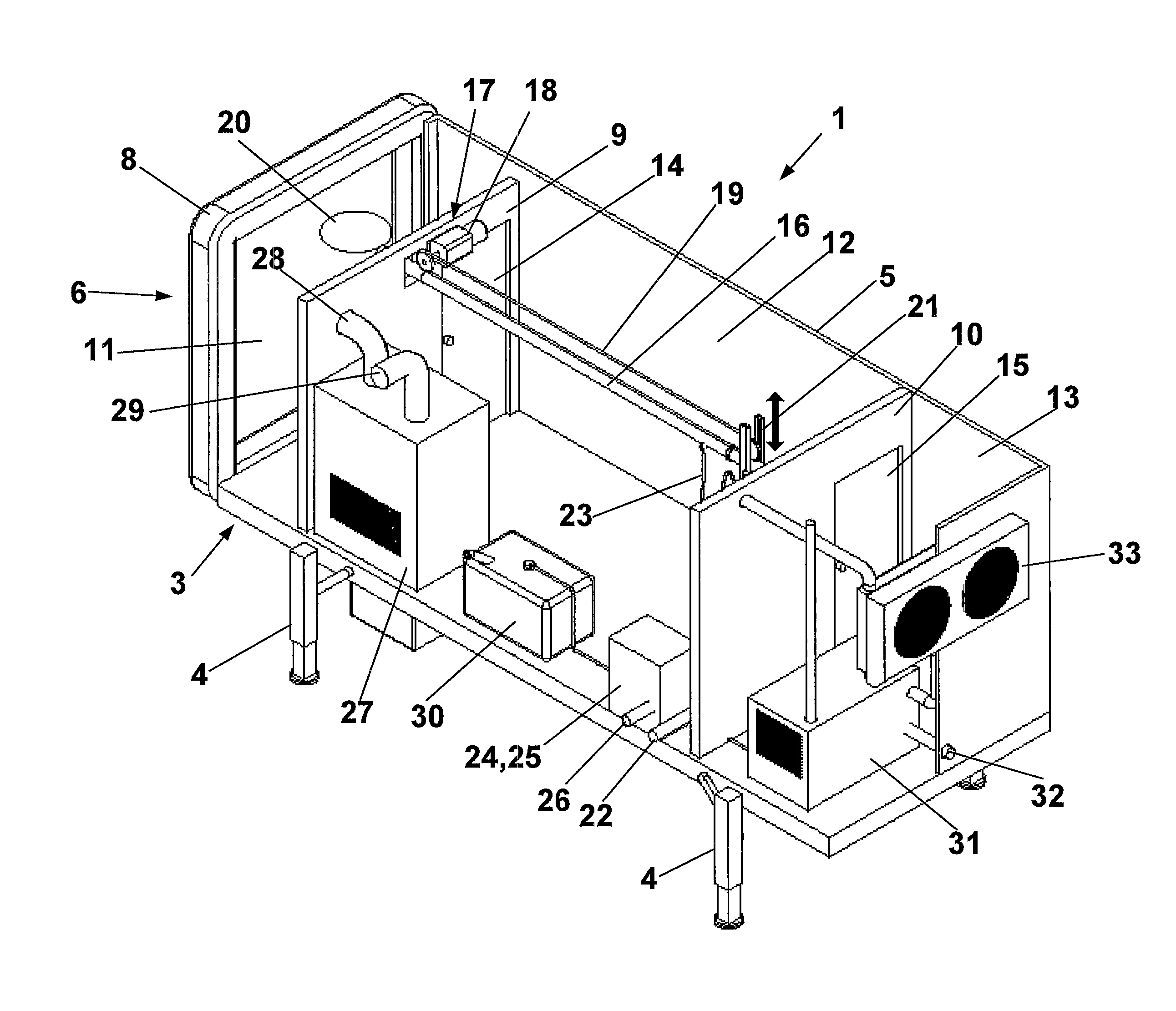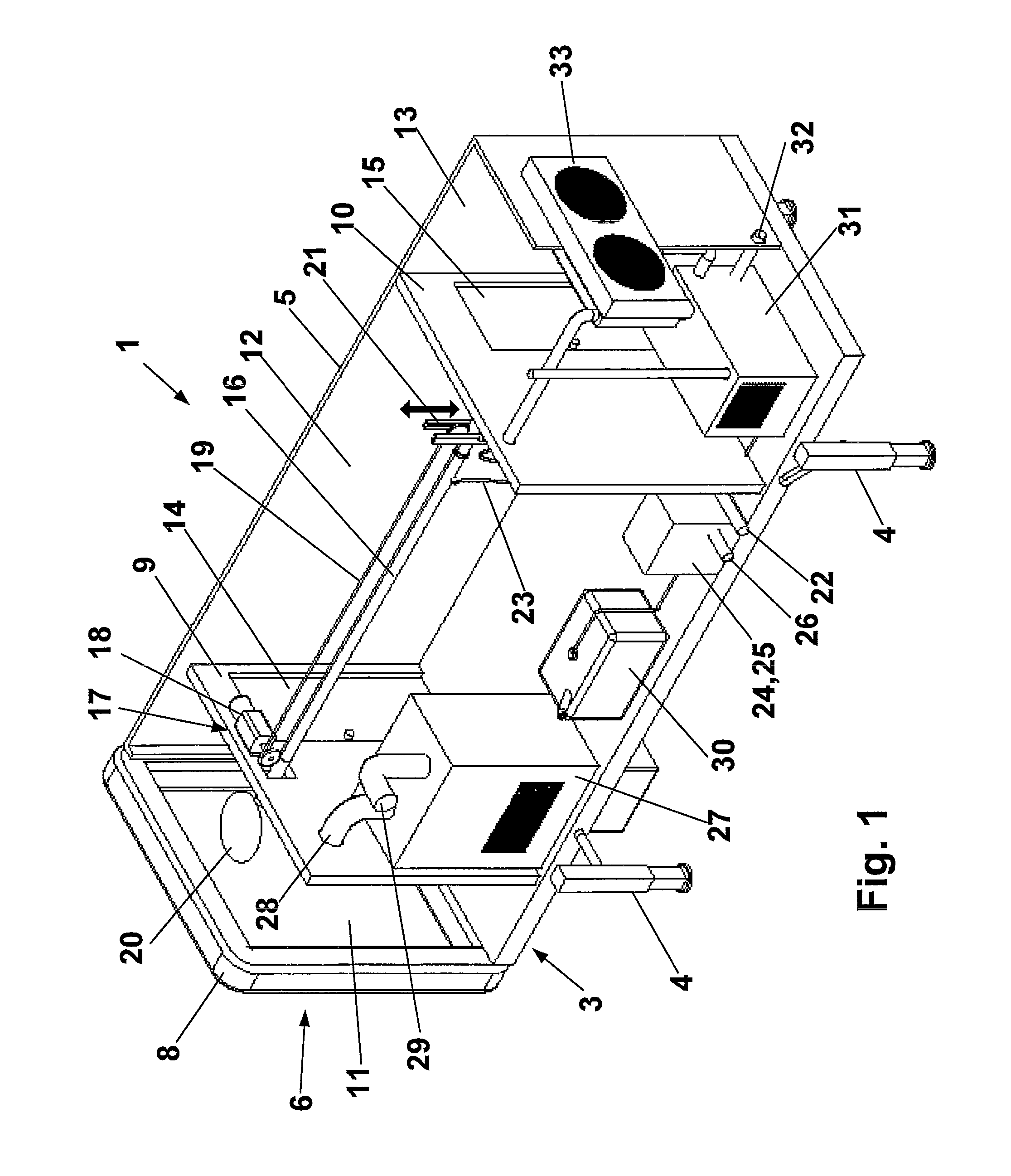Loading and unloading device for cargo containers, silos and other vessels
a cargo container and unloading technology, applied in the direction of monocoque constructions, transportation items, item transportation vehicles, etc., can solve the problems of lack of information flow, excessive packaging, and large space deficit in current processes and procedures, and achieve the lowest cost in this area, avoid unnecessary interim transportation by road, and small space
- Summary
- Abstract
- Description
- Claims
- Application Information
AI Technical Summary
Benefits of technology
Problems solved by technology
Method used
Image
Examples
Embodiment Construction
[0046]The following example of an embodiment of the present invention relates to a cargo container to be loaded with bulk goods, i.e. the loading procedure. The description applies correspondingly to the unloading procedure of the cargo container.
[0047]The loading and unloading device 1 for a vessel to be loaded with bulk goods, in this example a cargo container 2, is mounted on a, as such well-known, usually standardized swap body platform 3, on which four extendable and retractable container supports 4 are mounted, which are resting on the ground.
[0048]A standard container 5, one end face 6 of which is open, is mounted on the swap body platform 3. However, this end face 6 can be closed by means of a roller shutter 7, as shown in FIG. 2. Furthermore, the end face 6 of the container 5 is equipped with a circumferential sealing frame 8 made from a flexible, preferably rubber material, which is in flush contact with the corresponding end face of the cargo container 2 to be loaded duri...
PUM
 Login to View More
Login to View More Abstract
Description
Claims
Application Information
 Login to View More
Login to View More - R&D
- Intellectual Property
- Life Sciences
- Materials
- Tech Scout
- Unparalleled Data Quality
- Higher Quality Content
- 60% Fewer Hallucinations
Browse by: Latest US Patents, China's latest patents, Technical Efficacy Thesaurus, Application Domain, Technology Topic, Popular Technical Reports.
© 2025 PatSnap. All rights reserved.Legal|Privacy policy|Modern Slavery Act Transparency Statement|Sitemap|About US| Contact US: help@patsnap.com



